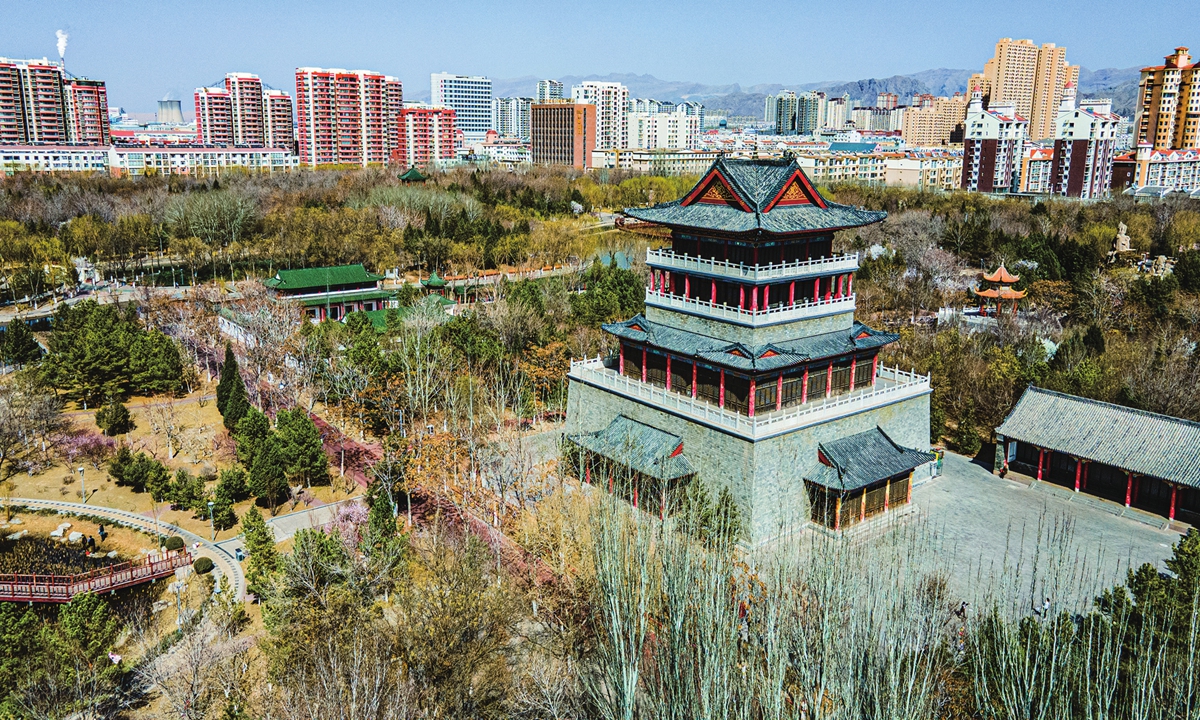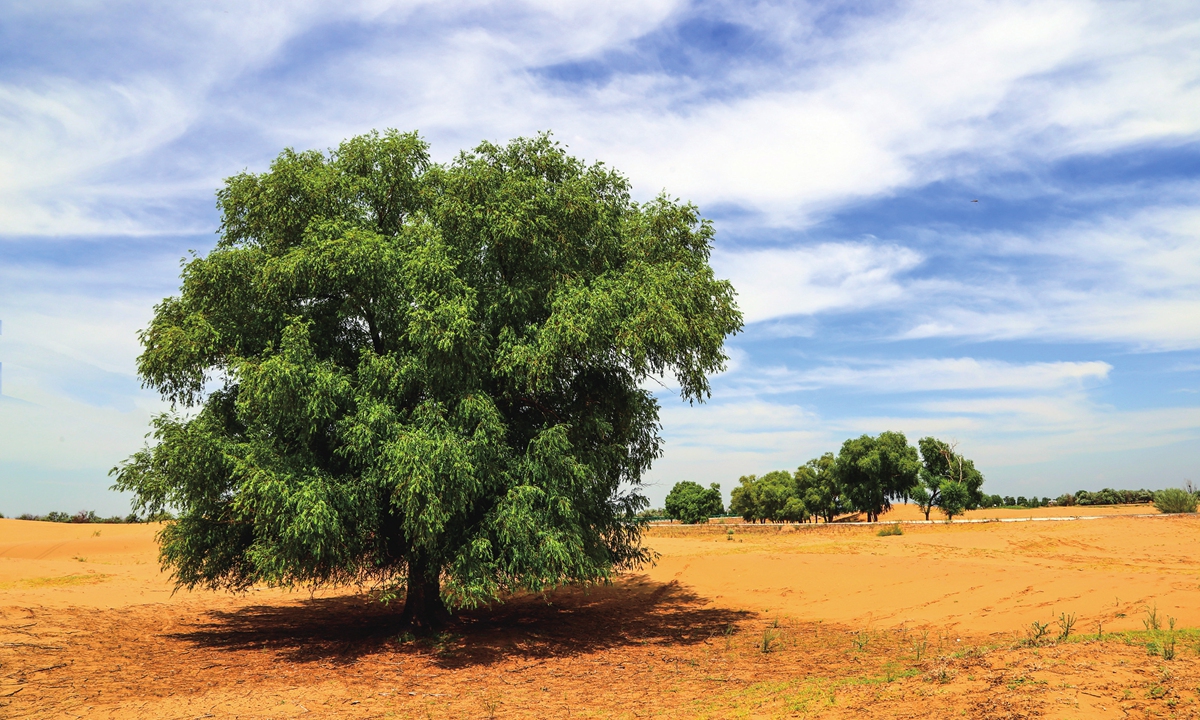
The Renmin Park in Wuhai city center Photo: VCG

A desert view of Wuhai, Inner Mongolia Autonomous Region Photo: VCG
"We treat every tree, even seedling like a treasure. Because the cost of planting a tree in Inner Mongolia is ten times higher than that of the south of China," Chen Feng, an employee from the forestry and grassland bureau in Wuhai, North China's Inner Mongolia Autonomous Region told the Global Times.
He was not exaggerating. Wuhai is a prefecture-level city and regional center in Inner Mongolia and it is located on the Yellow River between the Gobi and Ordos deserts. Like most cities in Inner Mongolia, weather here is dry and the city used to frequently undergo sandstorms.
However, the city has become greener in recent years. Every tree on the streets has been planted on a grid with their roots connected underneath with a tube for irrigation. "In this hot summer, we have to water those trees from three to six times a day. We treat those trees like our babies," said Chen.
Yang Lixiang is another engineer who works in the city's forestry and grassland bureau. He remembered when he first came to the city back in 2005, "there were sand dunes everywhere. Whenever there was wind, it blew sand all over the place, and the city would turn completely yellow."
Then after years of improving infrastructures such as building roads, connecting electricity and water, and introduce technologies such as drip irrigation, 43 percent of the city has been covered with green, compared with the 0.38 percent of 1976 when the city was first built.
The city's Gande'er mountain is a perfect embodiment of generations of Wuhai people's efforts in making their homeland greener.
At 1,760 meters above sea level, the mountain was formed by eolian flowing sand. For years, the mountain had withstood sandstorms and had no sign of grass.
Yang and his colleagues had to live in the mountain for decades to build roads, find water resources and build an electricity grid, laying the foundation for mass plantation of trees and grass.
"There was no road for us to drive into the desert. To save time, we had lived there for decades to plant trees and grass."
At first, most trees would fall down the second day after being planted, said Yang. However, those workers did not give up, instead they treated those trees as babies and used new technologies to water them. In the end, 95 percent of the trees survived.
"At that time, we firmly believed all of our efforts would finally pay off, and the next generation will not suffer sandstorms anymore and will be able to grow up in a green forest," said Yang.
Now the Gande'er mountain is covered with Scots pine, dragon spruce, populus alba and other plants. Blue sheep can be seen everywhere in the mountain jumping around even when people are present.
To boost tourism, the Wuhai city government also built an 88.95-meter-tall statue of Genghis Khan on the mountain top, which took eight years and nearly $100 million. There is a museum inside the statue, which presents paintings and cultural relics related to ethnic Mongolian culture.
After planting trees, preserving ecology and building cultural sites, Gande'er mountain has now changed from a barren mountain,where nothing grows, to an iconic tourist spot, and a leisure resort for locals who want to go mountain trekking.
The conversionThe greener version of Wuhai was not earned by just planting trees. The city used to rely heavily on coal, and such economic structure has caused heavy pollution for this already sand-surrounded city.
In recent years, the city has been gradually shaking off its reliance on coal, and has begun to embrace other industries. Tourism is among one of them.
With the help of its natural resources, Wuhai has developed desert tourism. The charming Wuhai Lake, a man-made lake formed after the completion of the Yellow River Haibo Bay Water Conservancy Project, covering an area of 118 square kilometers, has helped the city's tourism develop fast.
The lake is located within the desert and was dubbed by tourists as a "half sea half desert." The local government provided a boat tour around the lake,and it has gradually become an Instagram-worthy location for some Chinese tourists who seek to visit the tourist spots outside the main routes.
Thanks to its climate, Wuhai also boasts high-quality vineyards and wineries. With years of eco-friendly efforts, the industrial city has surprised visitors with its green development.
During the May Day holidays in 2023, the city, populated with 560,000 people, received 556,300 trips, an increase of 66.7 percent from the same period of 2022, and an increase of 270.2 percent compared with pre-pandemic levels, according to government data.
Apart from catering to tourists, Wuhai is devoted to making local residents' life more comfortable.
In recent years, parks, both large and small, have sprung up around the city. A park alongside the Wuhai Lake was completed in June this year. Many locals brought birdseed when they went to the new park, as pigeons and other birds flocked to the park after the eco-system of Wuhai improved.
Wang, a local in his 30s, was watching his children feeding the birds. "When I was a child, I had never imagined the city would be like this-surrounded by green trees and birds coming in numbers… It is extremely difficult to plant trees and improve the environment in Inner Mongolia, but we have made it," he said.





